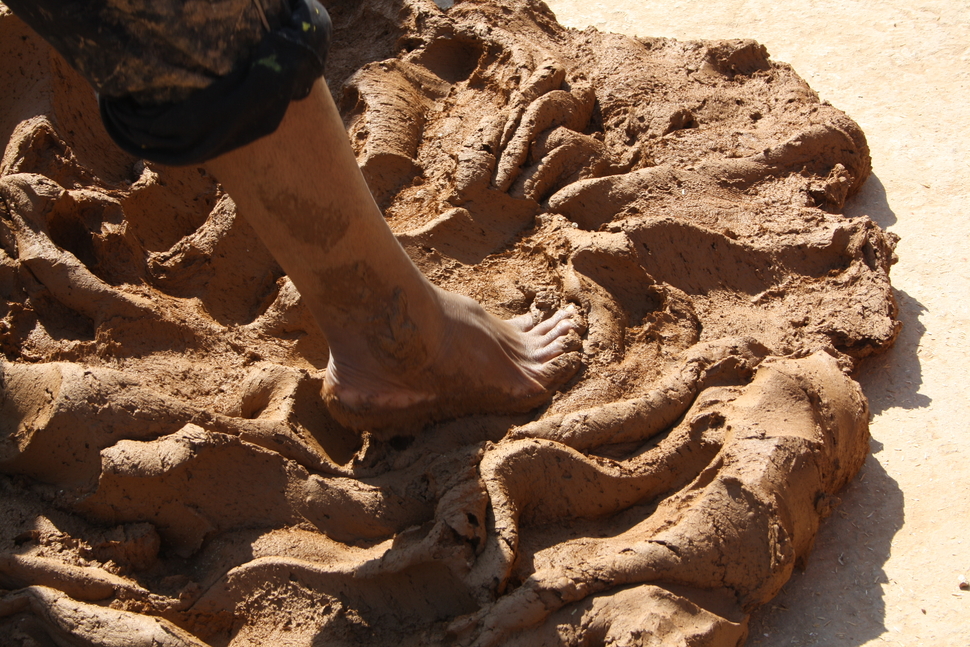Clay
The most important material that we will use is clay. Clay is locally available, cheap, easy to work with and sustainable, since it doesn't burn out under the intense heat of a fire. Because it is necessary to create very high temperatures in a combustion chamber in order to clean up dangerous emissions. Because these high temperatures quickly degrade metals, clay is a very good material to use for building the cookstove. (Design principles for wood burning cookstoves)
However, there are certain disadvantages which we need to take into account. First of all, clay is a very heavy material. It is not possible to make the whole cookstove out of clay, since we want our cookstove to be portable. Even more important, clay is a high thermal mass material, which means that it is not insulating at all. This leads to inefficient cookstoves since the clay doesn't conduct heat, instead it deducts the heat of the fire. The efficiency of a cookstove completely made out of clay can even be worse than the three-stone fire. (Design principles for wood burning cookstoves)
Insulative ceramics
To solve these problems of weight and inefficiency, we can make use of insulative ceramics. This is an insulative material, the filler, mixed with clay as a binder. The clay forms a matrix around the filler, which provides the insulation. There are two possible types of fillers; it can be a lightweight fireproof material or an organic material. In the case of the organic material, the filler will burn away and leave insulative spaces of air in the clay.
We did some research on different fillers we could use, and we found the following things: (Design principles for wood burning cookstoves)
- Sawdust
- Charcoal
- Vermiculite
- Pumice mixConclusion
- Perlite mix
Last year, the team used sawdust, laterite and wood ash, provided by the ceramics centre. We will need to do more research on whether it also would be possible to use other materials and to see what the most efficient and affordable fillers would be. This research will be done in the first weeks of our stay in Ghana, since we do not know the current situation of the availability of the materials.
